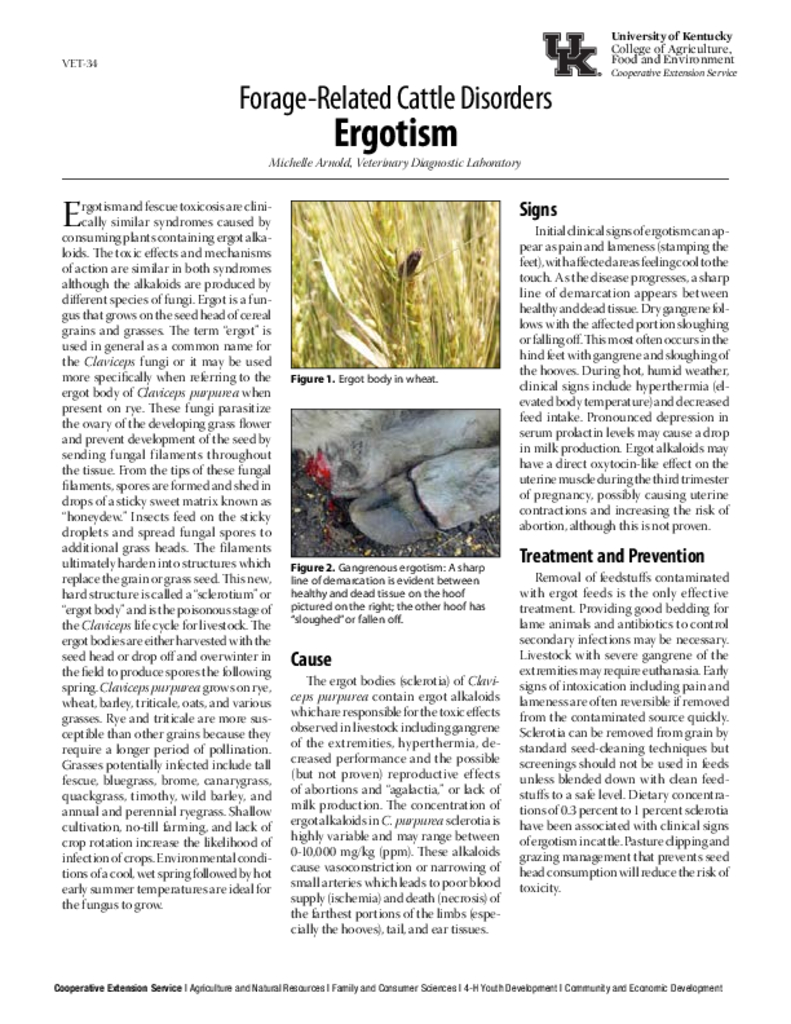Forage-Related Cattle Disorders: Ergotism
VET-34: Forage-Related Cattle Disorders: Ergotism
Authored by: Michelle Arnold
Abstract
Ergotism and fescue toxicosis are clinically similar syndromes caused by consuming plants containing ergot alkaloids. The toxic effects and mechanisms of action are similar in both syndromes although the alkaloids are produced by different species of fungi. It grows on rye, wheat, barley, triticale, oats, and various grasses. Rye and triticale are more susceptible than other grains because they require a longer period of pollination. Grasses potentially infected include tall fescue, bluegrass, brome, canarygrass, quackgrass, timothy, wild barley, and annual and perennial ryegrass. Shallow cultivation, no-till farming, and lack of crop rotation increase the likelihood of infection of crops. Environmental conditions of a cool, wet spring followed by hot early summer temperatures are ideal for the fungus to grow.
Core Details
Publication ID
VET-34
Status
New
Publication Date
Mar. 31, 2014
Series
Multi-Part Series
Categorical Details
Language
English
Peer Reviewed?
Yes

